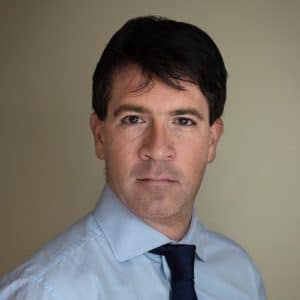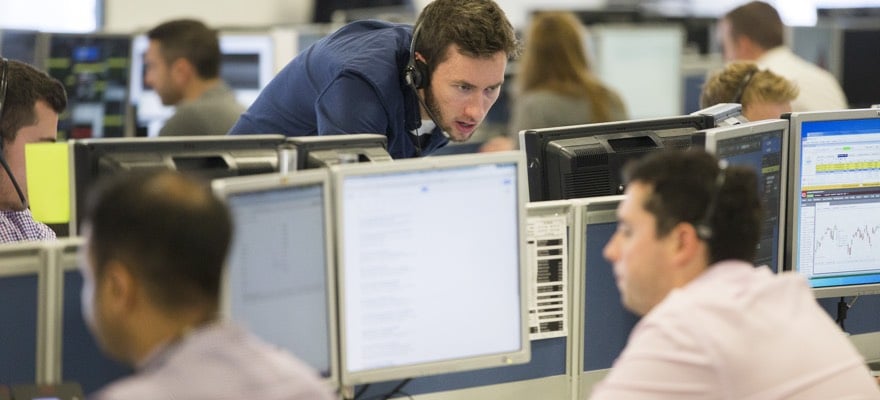It was last December that the trading industry’s largest self-regulating body, the Global Foreign Exchange Committee (GFXC), released a new code of conduct. The updated code proscribed trading by market participants based on information from the client’s trade request during the last look window.
Since then, the organization has grown, and it now counts over 300 institutions amongst its members. Last month, the group held its annual meeting, hosted by the South African Reserve Bank, in Johannesburg.
Keeping a close eye on the proceedings was Dan Marcus, CEO of ParFX, a spot FX Trading Platform which shares much in common with the FX Global Code. ParFX was developed by a group of the largest FX trading institutions in the world, which had become frustrated with the deteriorating trading environment on public spot FX trading venues and wanted to reintroduce fair, equal and transparent behaviour to their day-to-day trading activities.
This week, Finance Magnates spoke to Marcus about the outcomes of the GFXC’s annual meeting, the future of the organisation and ParFX’s plans for the future.
What do you think was the most positive outcome from the GFXC meeting?
I believe the most positive thing is the continued open dialogue taking place amongst policymakers and market participants. It’s right that the GFXC reviews current practices conducts further work and consults with the industry on topics such as anonymous trading and disclosure of information.
Also, the fact that the GFXC has established a dedicated group to deepen engagement with the buy-side. This is a critical step for the Code’s development and its continued integration in the FX market, and will surely boost buy-side adoption.
More than 300 institutions have now signed up to the GFXC’s Global Code. How meaningful is the code and what can institutions do to ensure it is adhered to?
This is good progress. Adoption has been somewhat of a steady, trickle-down process that began with the largest banks, but we are now seeing the Code gain momentum and feed through to asset managers, corporates, and other end-users. The decision by the European Association of Corporate Treasurers (EACT) to launch a register for corporates adhering to the Code is a great example of how there is continued take-up across all sections of the FX market. The more institutions that sign up, the more momentum it will inevitably achieve.

Dan Marcus, CEO, ParFX
As an industry, we are still at a relatively early stage, and there is much more to do in terms of training and education of staff. However, it’s also worth reflecting on how the Code has already affected day-to-day market practices. Counterparties are asking each other the right questions, demanding greater levels of transparency and seeking clarity on policies relating to last look, pricing, and Execution . This demonstrates the progress we have made over the past year or so, and reiterates how the Code’s principles remain front and center for the FX industry.
How effective do you think the GFXC will be in pushing bad actors out of the FX industry and, in the long run, do you see the GFXC becoming a key authority in the industry?
Rather than “pushing bad actors” out, we should work together to reform the culture, behavior and ethics within FX institutions and ensure everyone adheres to the same principles. This is what the FX Global Code seeks to achieve – it sets universal standards, best practices and clear guidelines for what is and isn’t acceptable behavior.
The GFXC has the full support of the FX industry in this respect. For example, several central banks, including the European Central Bank and the Reserve Bank of Australia, have stated their intention to only maintain counterparty relationships with firms that commit to the Code in the long-term.
ParFX welcomes the appointments of the new Chair, Simon Potter, and Co-Vice Chairs, Adrian Boehler and Akira Hoshino. Their experience and knowledge makes them the ideal team to spearhead the GFXC’s efforts to improve ethics in the FX market over the coming years.
Moving to ParFX, the platform has been in business now for five years. Two of your major selling points are transparency and placing trading strategy over trading speed. Is demand still as strong for those services as it was in 2013?
The principles on which ParFX was designed, have never been more relevant, particularly in light of the FX Global Code. We are one of the fastest growing platforms in spot FX, and no other platform epitomizes the Code’s principles like ParFX.
We continue to demonstrate adherence to the Code by treating all participants fairly and equally and promoting firm pricing, transparency, and good trading behavior. Combined, these features promote a robust, fair, open, liquid and transparent FX market.
Although we are entering our fifth year of business, our vision and model set out at launch remains 'futureproofed' in many ways. The call for fairness, equality, and transparency from our founders is now reflected across the market. ParFX is, without doubt, as relevant and differentiated now as it was then.
Do you have any plans to improve or alter your service in the near future?
Our business model ensures we can assess and introduce new products relatively quickly. We have product development and growth plans which we expect to come to fruition by the end of 2018, and we continue to attract participants and trading strategies that recognize the benefits of adhering to our guiding principles.
Our top 10 most active participants are now equally split between the largest bank and non-bank market participants. Those that trade on our platform do so because they know it is a neutral, independent trading venue and free of the toxic elements of behavior that have become prevalent elsewhere. This demonstrates how all market participants are attracted to the platform’s principles and seek to engage in good trading behavior in a fair and transparent trading environment.
Have you witnessed any regional shifts in demand for your service since we last interviewed ParFX in 2015? Do you have any plans to focus your efforts in any new jurisdictions?
We have a distribution network in place which enables us to serve customers internationally. That being said, in the short-term we are focused on specific regions and currencies where our customers believe there are disproportionate levels of bad trading behavior taking place that ParFX can help to address

















